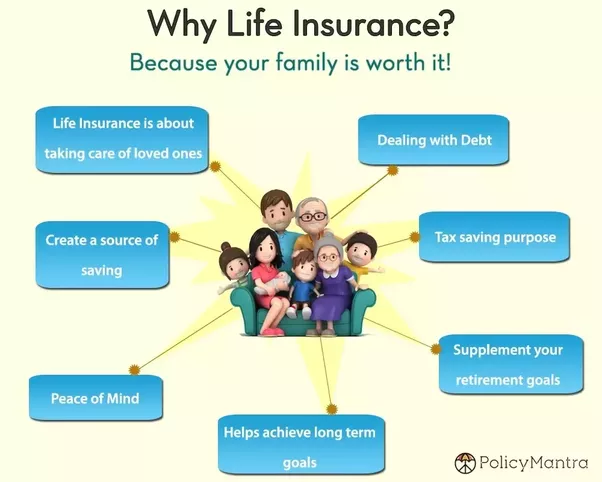6 Easy Facts About Pacific Prime Described
6 Easy Facts About Pacific Prime Described
Blog Article
The 10-Minute Rule for Pacific Prime
Table of ContentsThe 2-Minute Rule for Pacific Prime4 Easy Facts About Pacific Prime DescribedThe Facts About Pacific Prime RevealedPacific Prime Fundamentals Explained8 Simple Techniques For Pacific Prime

This is since the information were collected for a period of solid economic efficiency. Of the approximated 42 million individuals who were uninsured, just about about 420,000 (regarding 1 percent) were under 65 years old, the age at which most Americans come to be eligible for Medicare; 32 million were adults in between ages 18 and 65, around 19 percent of all adults in this age team; and 10 million were youngsters under 18 years old, about 13.9 percent of all children (Mills, 2000).
These quotes of the variety of individuals without insurance are generated from the annual March Supplement to the Present Populace Study (CPS), conducted by the Census Bureau. Unless or else kept in mind, national estimates of individuals without medical insurance and proportions of the populace with various kinds of insurance coverage are based upon the CPS, the most extensively utilized resource of estimates of insurance policy coverage and uninsurance rates.
Getting My Pacific Prime To Work

Still, the CPS is specifically valuable since it creates yearly quotes fairly quickly, reporting the previous year's insurance coverage approximates each September, and due to the fact that it is the basis for a consistent set of quotes for even more than 20 years, permitting evaluation of fads in insurance coverage gradually. For these reasons, as well as the substantial use of the CPS in other studies of insurance policy protection that are presented in this record, we rely upon CPS estimates, with constraints noted.

The estimate of the variety of uninsured people broadens when a populace's insurance coverage status is tracked for a number of years. Over a three-year duration beginning early in 1993, 72 million individuals, 29 percent of the united state population, were without coverage for at least one month. Within a single year (1994 ), 53 million individuals experienced at the very least a month without coverage (Bennefield, 1998a)
6 out of every 10 uninsured grownups are themselves employed. Although functioning does boost the chance that a person and one's member of the family will have insurance policy, it is not a warranty. Also participants of families with two full time wage earners have virtually a one-in-ten possibility of being without insurance (9.1 percent uninsured rate) (Hoffman and Pohl, 2000).
Some Known Factual Statements About Pacific Prime
New immigrants make up a considerable percentage of individuals without health and wellness insurance. One analysis has associated a significant part of the current growth in the dimension of the united state uninsured population to immigrants who showed up in the nation in between 1994 and 1998 (Camarota and Edwards, 2000). Current immigrants (those that involved the United States within the past 4 years) do have a high rate of being uninsured (46 percent), but they and their kids represent just 6 percent of those without insurance policy nationally (Holahan et al., 2001).
The relationship between medical insurance and accessibility to care is well developed, as documented later in this chapter. The partnership in between wellness insurance policy and health outcomes is neither direct nor basic, a comprehensive professional and wellness services research study literature web links wellness insurance coverage to better access to care, far better top quality, and enhanced personal and populace health status.
Degrees of analysis dig this for examining the effects of uninsurance. It concentrates especially on those without any type of health insurance policy for any kind of size of time.
Some Known Details About Pacific Prime
The problems dealt with by the underinsured are in some aspects similar to those faced by the uninsured, although they are typically less serious. international health insurance. Uninsurance and underinsurance, however, entail distinctly different plan concerns, and the methods for addressing them may vary. Throughout this research study and the five reports to follow, the major emphasis is on individuals without medical insurance and therefore no support in spending for wellness care beyond what is readily available with charity and safeguard establishments
Medical insurance is a powerful aspect impacting receipt of treatment since both clients and doctors respond to the out-of-pocket price of solutions - https://www.metal-archives.com/users/pacificpr1me. Health and wellness insurance coverage, nevertheless, is neither needed nor sufficient to get to medical solutions. The independent and direct impact of wellness insurance policy protection on access to health and wellness services is well established.
Others will acquire the health care they need even without wellness insurance policy, by paying for it out of pocket or seeking it from providers that offer care free or at extremely subsidized rates. For still others, health and wellness insurance alone does not make sure invoice of care as a result of other nonfinancial barriers, such as an absence of health care providers in their neighborhood, minimal access to transport, illiteracy, or linguistic and cultural distinctions.
7 Simple Techniques For Pacific Prime
Official research regarding without insurance populations in the United States dates to the late 1920s and very early 1930s when the Committee on the Price of Treatment produced a collection of reports concerning financing physician workplace sees and hospital stays. This problem became prominent as the varieties of medically indigent climbed throughout the Great Anxiety.
Report this page